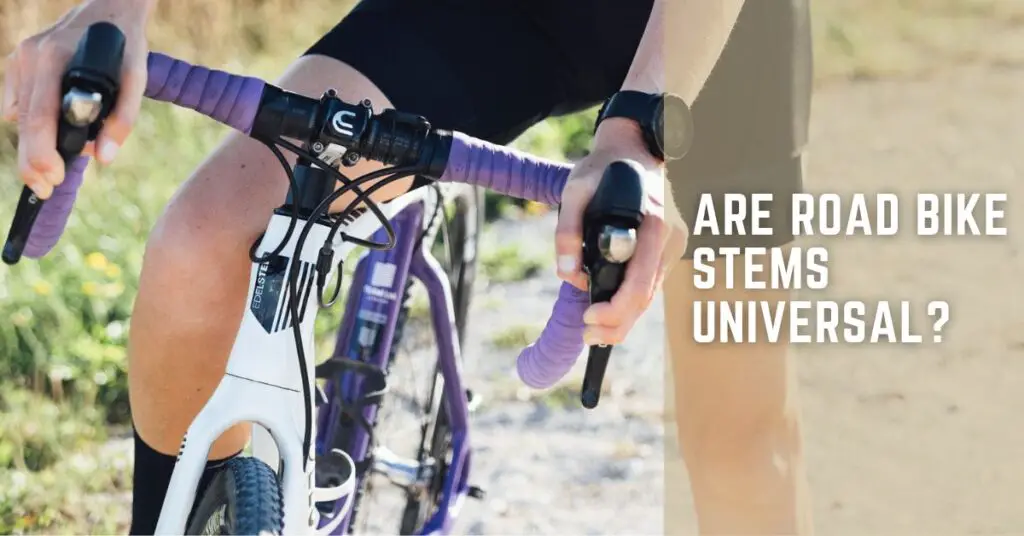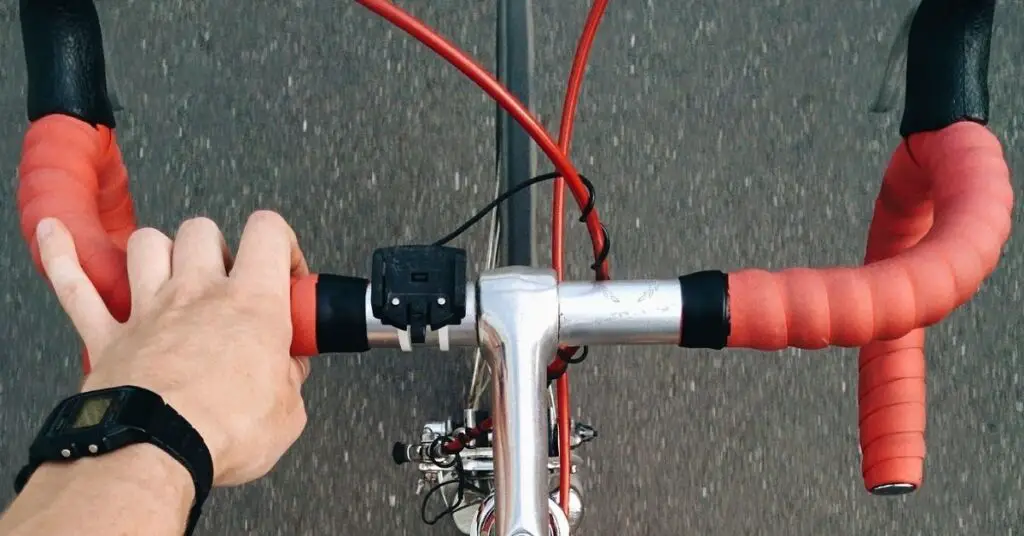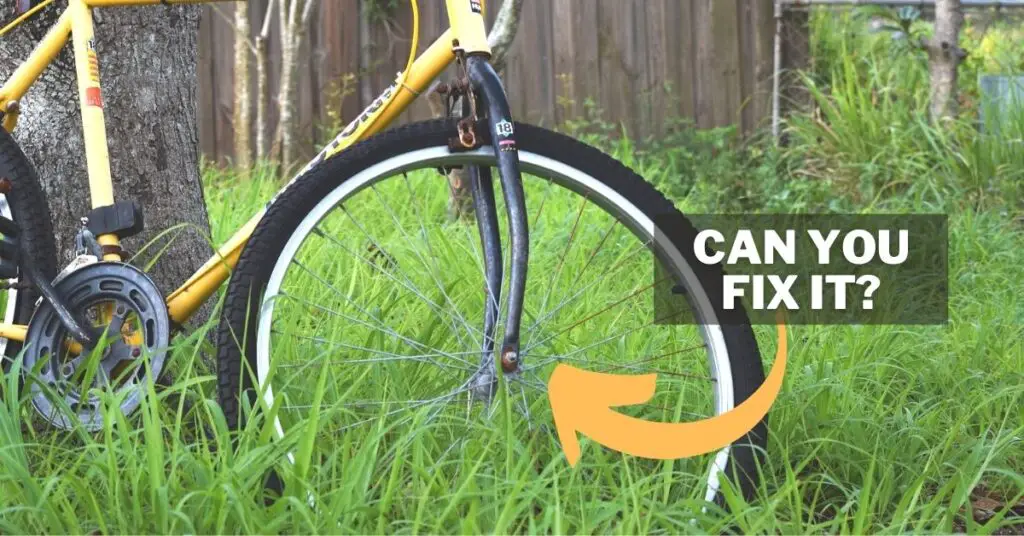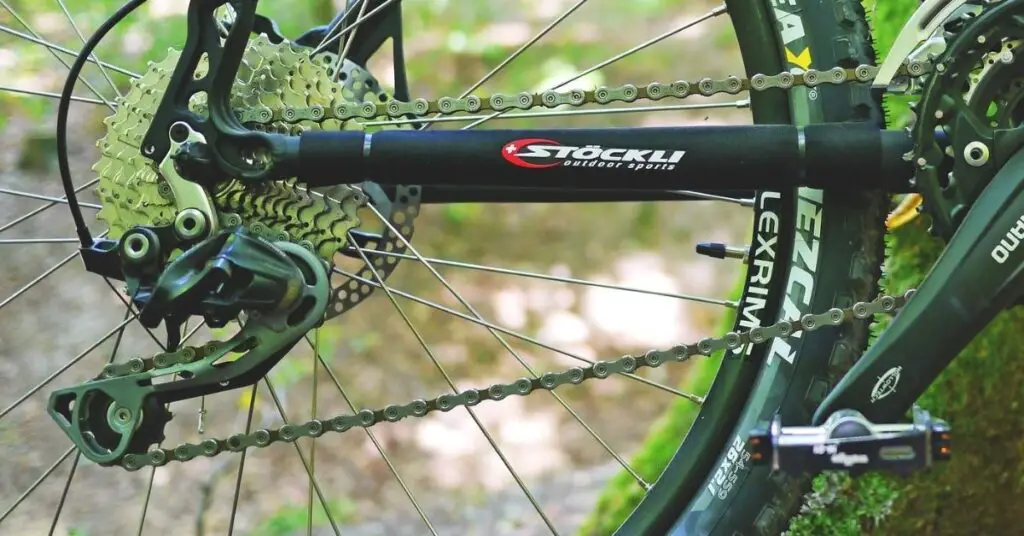Normally, you wouldn’t give a bike stem much thought. But did you know this is a vital part that affects your riding position? Say you bought a bike, but the reach is either too long or too short. Can changing the stem help? How do you get the correct size stem for your bike? Would a short stem affect the handling of the bike? Read further to find out more about this crucial piece of your bike.

Are Road Bike Stems Universal?
No, bike stems are not universal. There are 2 types of stems, known as threadless and quill (or threaded). Bike stems are also of different lengths, to suit the rider’s comfort and handling of the bike.
Threadless stems are newer and more popular compared to quill stems. In a threadless system, the stem is clamped outside the steering tube. Quill stems are inserted into the steering tube and held in place by a bolt.
Determine What Stem Size You Need! (Here’s How!)
Stems connect the handlebars to the steering fork of the bike. The length of the stem, therefore, determines the handling of the bike. If you feel excessively stretched out, a shorter stem will shorten the reach and put you in a more upright position. Conversely, if you feel constrained when riding, using a longer stem will extend your reach.
Road bike stems are longer than mountain bike stems. This provides more stability in handling wider turns. Road bike stems are between 80mm to 120mm, and mountain bike stems are between 50-80 mm. The gravel bike stems are usually in between the road and mountain bike stem lengths.
The stem is measured from the steer tube’s center to the center of the handlebar’s clamp. When determining the ideal length of the stem, look at the following:
1- Stem rise
The stem rise affects the height of the handlebars. The more the rise angle, the shorter the reach of the stem.
2- Bike length
The length of the frame of the bike is important as well. A smaller bike will make you feel cramped up, whereas a larger bike may force you to reach the handlebars.
3- Front hub
You will know if you have the right stem length if the handlebars cover the front hub. If you can see the hub, the stem is too short.
The stem also depends on your riding style and the type of bike you have.
For road bikes, the ideal length is between 90-120mm. Instead of a trial-and-error method of determining the stem size, visit the local bike shop for professional assistance in measuring the ideal length.
They should also advise you on the correct seating position that will avoid unnecessary strain on your upper body.
Does a Shorter Stem Affect Handling?
Yes, a shorter stem will affect handling. Typically, handling will be quicker with a shorter stem and slower, and more predictable with a longer stem. Shorter stems will likely be slightly less stable but more reactive to your steering changes. This means you need to be careful when turning around corners and bends.
Mountain bikes have shorter stems to enable quick steering around obstacles. Shorter stems are also slightly lighter in weight.
Again, to get the ideal length for your bike and riding style, you should try different lengths of the stem to find the most suitable one for you.
How Do I Know If My Bike Stem Is Too Short? (50mm, 70mm, 90mm)
You will know if your stem is too short if you feel cramped up, and you are quite upright on the saddle. The ideal stem size is 90mm, but this also depends on the frame length and your comfort level. 70mm and 50mm are considered short stems.
If your bike has a short stem and you ride it a few times (assuming you are new at cycling), you will feel some discomfort if it is too short for you. this also depends on the length of your torso and hands.
If riding with a 50mm or a 70mm is comfortable for you, without causing any kind of strain on your body, then carry on. If you feel slight discomfort, you may want to experiment with a slightly longer stem.
Stems that Pros Use!
Professional cyclists use long stems as it provides a better aerodynamic position. These stems can be between 100-130mm and possibly up to 150mm.
The lengthy reach enables the upper body to go down to a lower position. This reduces the air resistance and increases the speed. The rider’s weight is also pushed forward with a long stem. This gives the bike more stability, which is advantageous when it comes to riding fast.
Professional cyclists also ‘slam the stem’. This means lowering the stem completely. This provides more aerodynamics to the rider.
Professional cyclists also have expert bike fitters to advise them on the ideal length of the stem and frame for their bikes. Some may find their sweet spot by trying out different stem lengths.
While it is tempting to copy professional riders, especially for speed purposes, it is not advisable.
Professional riders spend hours on the bike and are used to being in that position for long periods. You may end up with an injury by trying to copy their style and posture of riding.
Final Thoughts!
Threadless stems are more popular than quill stems. Different bikes have different lengths of stems. Road bikes will have longer ones. Mountain bikes will have shorter ones.
Getting stems that are too long or too short may result in injuries and strains on the back, shoulders, and hands. Short stems will affect the handling of the bike differently from long stems. With short stems, the bike will be more reactive to your steering.
Professional cyclists have very long stems to provide better aerodynamics. Do not try to imitate them for the sake of speed as you will risk injuring yourself. Go for a bike fitting by an expert to get the ideal length of stem that suits you the best.




